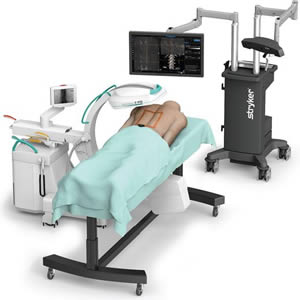Surgeons and others in the medical field are always searching for ways to improve patient outcomes. Advancements in technology and the goal of making spinal surgery less invasive and easier to recover from, have transformed the methods for spine surgery. Navigation assisted spine surgery is one technique that has revolutionized this area of medicine for both surgeons and patients.
Navigation assisted, or sometimes called computer assisted, surgery is a state-of-the-art technology that was first created for neurosurgery. Since precision is also critical when dealing with the spine, its use has expanded to spinal surgery. It gives surgeons like Charla R. Fischer, MD at NYU Langone Medical Center the ability to accurately visualize the procedure better than without navigation technology.
Specialized software
To accomplish navigation assisted surgery, specialized computer software is used to create a virtual 3D model of each patient’s spine. This helps guide the surgeon so there is much less room for error, as the doctor matches the virtual model on the computer monitor to the patient’s spine. This enables the doctor to see the surgical instruments and spinal implants and how they relate to the patient’s body. It is a real-time aid that the surgeon uses to help perform very precise actions. This lowers the risk of damage to surrounding structures and tissue, such as the spinal cord and nerves.
Benefits
Navigation technology eliminates the need for multiple X-rays to be taken throughout traditional spinal surgeries. This is safer for both the patient and surgical team by reducing radiation exposure. This technology also gives the doctor comprehensive data unique to the patient, allowing for more specific pre-planning and thus making the surgery more efficient and faster. Smaller incisions may also be possible, aiding in patient recovery as well.
Types of surgery
Some common uses for navigation assisted spine surgery include placing implants like pedicle screws during spinal fusion procedures. This may be performed due to spinal stenosis, spondylolisthesis, degenerative disc disease, tumors, fractures, deformity, infection and more.
Navigation assisted spine surgery does not take the place of using a skilled and experienced surgeon like Charla R. Fischer, MD at NYU Langone Medical Center in New York City. Instead, the technology gives the surgeon visibility into the patient’s body that is difficult with only the human eye. If you are looking for a safe and effective type of spine surgery, call Charla R. Fischer, MD today to learn more about navigation assisted technology and how it might benefit you.

